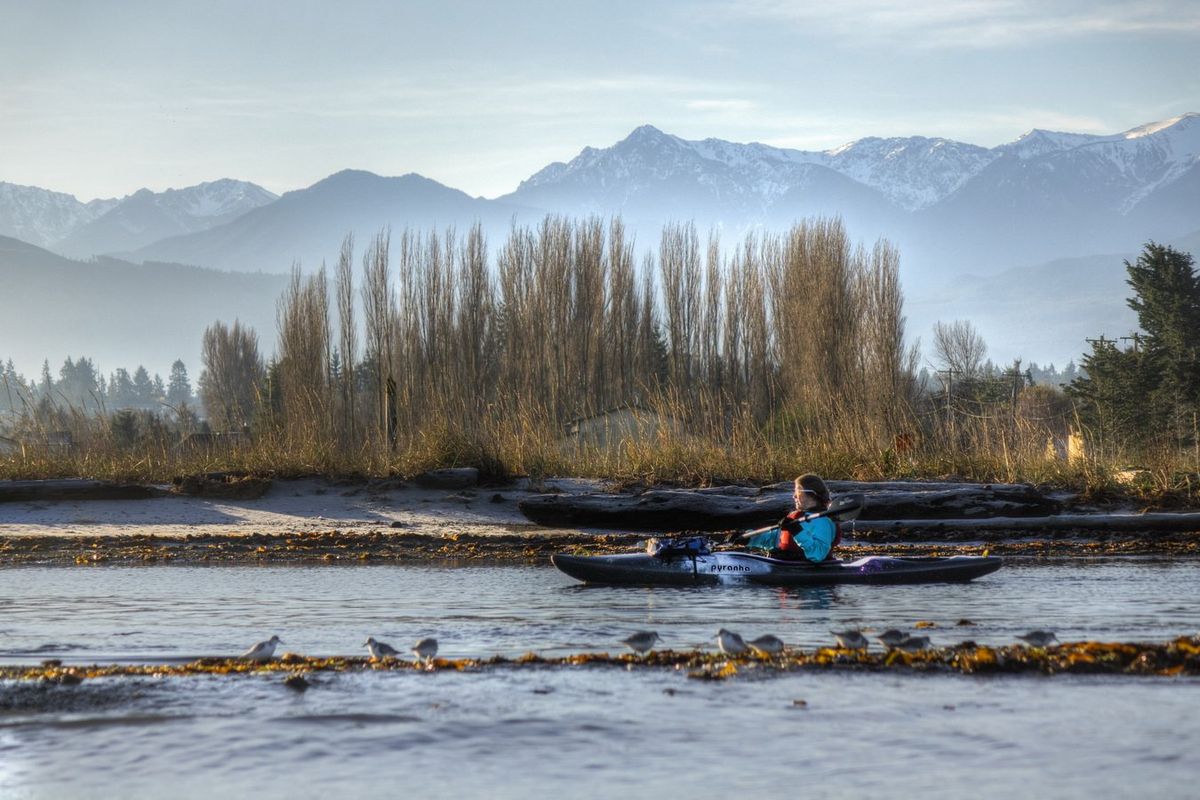
SEQUIM, Wash.—Jutting out into the Strait of Juan de Fuca is a fragile, slender spit of sand and glacial till leftover from the Pleistocene Epoch nearly 1.2 million years ago.
It is the longest spit in North America, a refuge and protective barrier for marine mammals and some 250 breeds of shorebirds, several of whom stop on their way between South America, Alaska and beyond to build up fat to fuel their long journeys.
And it is also about to become commercialized for private profit by an industrial oyster corporation.
The Dungeness Spit, part of the Dungeness National Wildlife Refuge, extends for five miles. Declared a refuge in 1915, its lush eelgrass beds are a pantry for waterfowl and a nursery for salmon that eventually feed whales and other wildlife. The Dungeness Bay itself is considered an important bird area by Audubon, for its significance for bird population conservation.
The refuge attracts birders and other recreationists from around the world. Territory enjoyed and cherished and serving as a nursery and refuge for wildlife that literally span the globe, will be subsumed for private gain. It is like a war on our marine ecosystem.
The Washington State Lands Commission, the Washington State Department of Ecology and the U.S. Army Corps of Engineers (Corps) issued permits for the Jamestown S’Klallam Tribe to commercially grow non-native oysters in Dungeness Bay. These will be sold to restaurants, consumers and exported to other countries.
The operator will initially anchor 20,000, with a buildup to 80,000, on-bottom toxic plastic bags of non-native oyster spat over tens of acres smack dab in the primary mudflat bird feeding area – an area that today is off-limits to human access. Tens of thousands of shorebirds from across the Western Hemisphere depend on the mudflat as a critical feeding stop during migration.






The bags will be anchored into the sediment, smothering the intertidal zone benthic life underneath, and will affect the nearby eelgrass. This plastic is a type of PFAS, the group of chemicals also known as forever chemicals, able to contaminate the water that the filter-feeding oysters will ingest. This chemical could then move up the food chain to unsuspecting consumers.
The plastic nets are known to have ensnared birds and fish at other industrially-operated shellfish farms.
The Corps refused to conduct an environmental impact study, yet in an internal 49-page Memorandum to Record, the Corps admitted to the destruction the shellfish operation will have, but still permitted it.
The U.S. Fish and Wildlife Service (USFWS), a division of the U.S. Interior Department, with authority to protect its refuges, withdrew its opposition to the operation. To protect the birds and their primary breeding and feeding grounds, this section of the refuge is closed six months of the year to human activity. Now the USFWS is permitting the industrial shellfish operator access to this protected area year-round, day and night.

As well, the USFWS is circumventing its own mandatory step of writing a compatibility determination.. Since this operation is incompatible, to write the determination would force the agency to publicly disallow the shellfish operation.
Violated, as well, are the Migratory Bird Treaty Act, the Endangered Species Act and the Clean Water Act. Organizations and individuals throughout the United States submitted comments, spoke out and petitioned to stop this shellfish operation. No agency acknowledged the public outcry.
The Dungeness National Wildlife Refuge industrial operation will be precedent-setting for our nation’s refuge system – and bodes poorly for what can happen in other protected areas.

Public funds upkeep national refuges. We have seen this sad song repeated over and over: When private corporations destroy public lands, the public is taxed to clean up the damage.
Today we are spending millions of dollars annually to clean up Washington state’s Puget Sound, the second largest estuary in the United States. Yet our state and federal agencies are opening these wildlife intertidal zones to more pollution and industrial activity. One third of Washington state’s coastal waters are filled with industrial shellfish aquaculture and plastic, leaving wildlife to forage elsewhere.
“In wilderness is the preservation of the world,” Henry David Thoreau wrote in 1862.
We should heed his words and protect rather than pollute our natural world. The state and federal governments should get back to protecting our wildlife refuges rather than acquiesce to their destruction.

All photos were taken by John Gussman.
